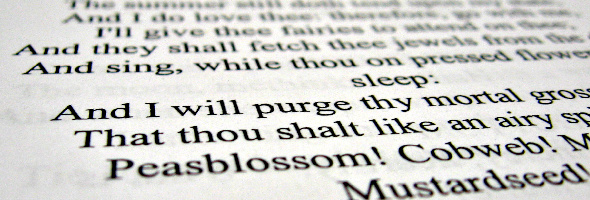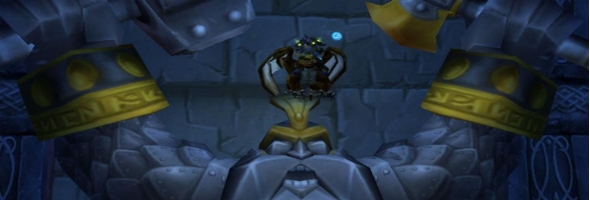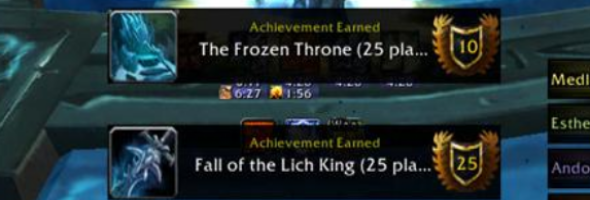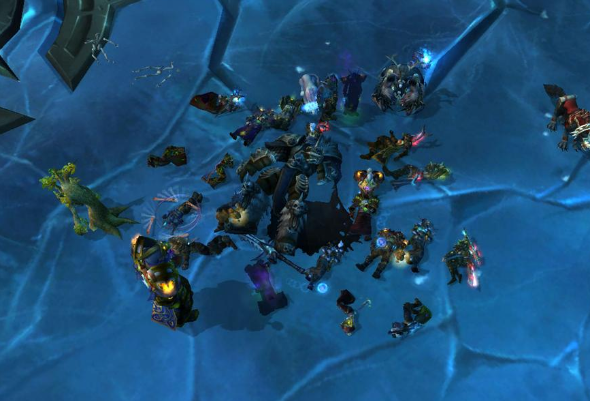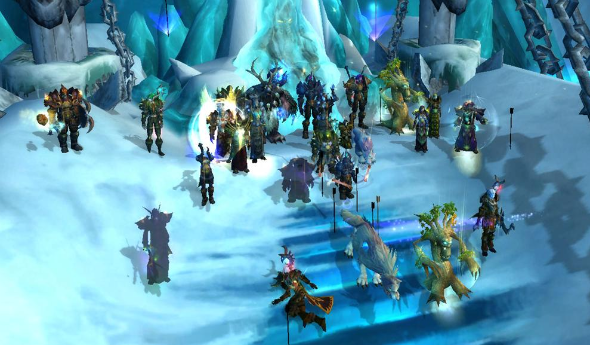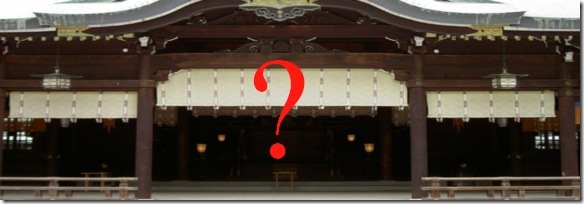**Image is text from one of my favorite Shakespeare plays, “A Midsummer Night’s Dream”.
In the week since the infamous post, I’ve been able to see the wide spectrum of responses and views on the topic. I’ve been condemned and praised for it. The praise came mostly because of points made in the post; the condemnation referred to the tone I used. I let the post simmer a few days, and it’s become clear to me that the tone definitely deserves the condemnation. Anyone that has read my posts here before has come to expect different of me (I hope). That’s true. I normally don’t write with vehemence, but this time I let my professionalism go and was wrong to do so.
The Apology
It was unprofessional of me to “attack” Dills as I did. Funny enough, those that know me in real life knew my tone was lighter than it’s been made out to be. That doesn’t excuse it, nor does it allow me to assume that anyone else would be able to tell the playfulness from some letters on a screen. We talk all the time about how it’s impossible to tell tone from a text message or an email. Something that’s meant as a tongue-in-cheek comment could be taken the complete opposite; something meant as an important conversation could be shrugged off as an “April Fool’s”-style joke. That’s the danger of writing/blogging like we do. Especially with the type of person I am outside of this game, I lost the foresight that I usually exemplify in my posts. It was never meant to be a “lol noob” type of phrasing at all (I’ll explain the Billy Madison quote in a minute). Was it meant to be a sharp criticism? Absolutely. However, the extra teeth–which came across even worse than intended–were uncalled for. I’m perfectly capable of writing a post that reflects my viewpoints and expresses my counterpoints in a clear and concise argument. Well, the argument got lost. My “bridge” comment was never meant to imply that anyone (including me) should jump off it. In Chicago, the Chicago River is actually used to move some of our sewage. People are not allowed to swim in it for fear of infection. I didn’t write the comparison to imply suicide but to simply say, “I could do this, but it wouldn’t be smart because it’s a gross river.”
The Billy Madison quote: I admit that this was a huge mistake. In drafting that post, that quote came into my head–not as a means to further slam someone but as a sort of ironic chuckle. It made me think of a movie that I know I get a kick out of. When I transcribed it, I never thought, “Ha! This’ll really show him!! RAWR!”. I thought it was a funny reference, and WoW!! was I wrong. Since I didn’t realize how my words would be interpreted, I also didn’t see the poor taste of that joke. Matt was right to remove it. I didn’t remove it originally because I was defensive and felt compelled to stand up for what I wrote. I was standing up for the wrong reasons.
Minus the tone, I still maintain the points I made about Dills’s post. It was unfair of me to attack him, but no one should be immune from criticism (even me, of course). In “An Instance of Fail”, there were rumblings of true debate in the comment section. This, to me, signified that there is real discussion in the points and counterpoints that were made. In writing the post, and even in the days following, I continued to read Dills’s entry. With all due respect, I stand by the inferences I made. There is nothing in the post that lead me to believe otherwise. I’d like to make my points in a much more civil way.
Lightwell
I really have no problem with Lightwell either coming or going. I think it’s a very interesting mechanic and can be situationally used. If it were fixed, I’m sure it’d be a great spell. It could be dropped right before a Bone Storm in Marrowgar or dropped behind the ice blocks in Sindragosa. It would be very beneficial during the 3rd phase of Professor Putricide for casters moving out of slime. Just a quick click as they’re running to the closest safe spot. Essentially, it could benefit any fight situation where the ability to dps is hindered by movement or transition phases. It’s a great alternative to spells like Divine Hymn or Tranquility. With both of those spells, the caster (Priest and Druid, respectively) has to remain still to channel it. This allows the Priest or Druid to continue moving during a transition, put distance between himself/herself and “the bad”, or simply cast spells on others that are nearer to visiting the graveyard.
Although the fate of Lightwell doesn’t really matter, I disagree with the following phrases:
“I know when I’m dpsing or tanking the last thing I want to think about is healing.”
“That’s what the healer is for.”
I remember when I was a lowly Warlock back in SSC/TK, I was excited to start a Priest, because I wanted to be a help to the raid in whatever way I could; healing seemed to be a great fit for me. Leveling to 70 wasn’t instantaneous, obviously. I then looked at my own Warlock spellbook to see how I could help the raid beyond just my Shadow Bolt spam. When it was deemed appropriate, I would put Curse of Weakness on the boss. I was always happy to throw up Curse of Tongues on Fathom-Guard Caribdis (in the Fathom-Lord fight in SSC) to give the Shaman and Rogues enough time to interrupt his huge heal. If everyone was taking a lot of damage, I would throw Siphon Life (when it was a spell) and then Drain Life the boss to give healers some more wiggle room. I would do this even if it was a hit to my DPS. Whatever was the best way for the raid to succeed, I did it.
It’s how I continue to play today. Even when I’m DPS’ing on my Enhancement Shaman, I’ll throw out an instant Healing Wave (via Maelstrom Weapon) to help out the healers when they need it. When I heal, if I have global cooldowns and mana to spare, I readily start DPSing the boss. It’s the mentality that I try to encourage in the people I play with. Of course it’s our job to fill our roles, but it’s also our job to help out the rest of the raid where we can. I remember when raid members carried bandages, and used health pots (when you could chain-pot, anyways). It was always more about “us” rather than “you” and “me.” It’s the “us” mindset that helps make our in-game community strong.
Dampen/Amplify Magic
“I know, we use Amplify Magic on the Saurfang fight. I’m aware of that. However; one fight does not make a spell useful or necessary.”
Although that may or may not be true for the current level of progression, look at other older bosses that stood to benefit from Amplify magic: Gruul, Patchwerk, General Vezax, Icehowl. Gruul hammers on the tank for physical damage. He doesn’t have a dedicated enrage. With Amplify Magic, you were able to squeeze a couple more Growths out of him. When Patchwerk was the gear check, we worked hard to gear up our off-tank to take the Hateful Strikes. Having Amplify Magic on the off-tanks made our heals hit harder, thereby saving our mana so we could make it to the enrage, if need be. As for Vezax, a fight where mana regen is negligible, any additional help for the healer was welcomed with open arms, especially on heroic when you’re not using the Saronite Vapor mechanic. There’s usually always at least one boss in each tier of progression that uses purely (or mostly) physical damage. If it can be used, there’s really no reason it shouldn’t be cast on a tank (or the raid, for that matter) that’s taking mostly physical damage. It’s hugely beneficial on Valithria Dreamwalker. Cast it on her and heal her quickly to 100%. Makes heroic a lot more manageable (more on this later).
“Dampen Magic is especially useless unless you are in pvp and there are no healers which usually means you will be failing no matter what you do.”
As for Dampen Magic, well of course it’s situational. A lot of mages use it for leveling. My friend Andrew plays a mage. Anytime he’s on his 56 mage and I’m on my 56 warrior, we have Dampen Magic on. It helps us out quite a bit. Some use it for farming. In those situations, less incoming damage means less time bandaging/eating. Like Dills says, it’s beneficial in PvP as well, especially world PvP or certain arena matchups. There’s some misinformation that PvP is pointless without a healer, and that’s actually not the case. When I’m up against a mage, Dampen Magic (or Amplify, too) is just one more thing I have to dispel off of him to get to his Ice Barrier. PvP is not necessarily who has the heals, but who plays his/her character better. ArenaJunkies.com is peppered heavily with purely dps teams. A team combining a mage with any other non-healing class(es) stands to gain a lot from Dampen Magic. Everytime I see a Mage/Rogue pairing that knows how to play, it’s very tough to beat. All of that CC, and then Dampen Magic makes it that much harder. Especially in PvP, people look for whatever edge they can get, no matter how small. It doesn’t serve the PvE benefit that many would like, but that doesn’t mean it’s useless by any means.
“I do think the idea is solid but in practicality it comes up so rarely that these spells are often completely forgotten about by many Mages.”
My argument: Just because a spell is used only on the occasional fight or on a situational basis, it does not mean it’s useless. People choose not to use it, and that’s fine. However, that doesn’t mean it’s a wasted spot in the spellbook. That’s the fun of the game. Each encounter is different and calls for different abilities. I would find the game pretty boring if I had to do the same thing each and every fight. It makes me sad that interesting abilities like these are being shed.
Mind Soothe/Soothe Animal
I have to admit, I never really knew about the value of Mind Soothe and Soothe Animal until I was in SSC back in Burning Crusade. Those were the days when CC was absolutely needed. Humanoids feared us, Beasts bled us, Dragonkin healed their friends. We had to have Saps, Sheeps, Repents, and anything we could think of. My friend Jayme plays a mage. A nice, squishy clothie. I could tell he’d be nervous stepping up to ready his Polymorph. One wrong step, and that pack comes charging at him. Death would be his likely end. I could even feel the anxiety across vent. A Priest and Druid then stepped up to Mind Soothe and Soothe Animal the mobs nearest to my friend. A sense of ease fell over him. Now, it didn’t need to be so precise where his character was placed. He had a little wiggle room. The pull went as planned, and no one died.
That brings us to Instructor Razuvious, the first boss in the Military Quarter of Naxxramas. Obviously, in 25man, you need to have two Priests to Mind Control two of his Understudies. Because of their aggro range and the range of Mind Control, this pull has the potential to be hectic. The first time I tried this fight, we had to have a countdown on when to run in, hoping that my Mind Control was able to take hold before the Understudy decided I’d be better used as a doormat. Another tactic was for our tank to run in, grab everything (and run his own risk of becoming a doormat) and possibly pull the mobs out of our range. It got frustrating, and it got frustrating fast, even with a team that I felt confident raiding. Once Mind Soothe was brought into the mix, it made everyone’s lives so much easier. I could settle into my spot, and the countdown was now when to cast Mind Control, not frantically to set up.
How about Zul’Aman? I always was so sad when they removed the Amani War Bear. We never were able to get ahead of the timer after a little while. That raid was full of Humanoids, as well as Beasts. The perfect place to use both of those spells to sneak by mobs and get the edge on that timer. Someone commented on Dills’s post that using those two spells was a great way to solidify that awesome bear for someone in his raid. I wish I would’ve thought of it at the time.
It serves a much bigger benefit than what Dills refers to as “…spells that sneaked in there because Blizzard need to give players something new around level 20 and ran out of ideas” or as a “[d]umb spell with almost no uses at all.” Keep in mind that we’re heading into an expansion that Blizzard wants to have more dependent on crowd control. I know I’d much rather be settled and ready for each pull in the new raids than have each one be a mad dash to gain control. Pulls like those lead to sloppy wipes and wasted raid time. As my buddy Dralo says, “Slow is smooth. Smooth is fast. Fast is deadly.” I’ve always found that Mind Soothe and Soothe Animal help that.
Thinking Outside the Box
Lodur’s guild, Unpossible, is still hammering proudly through ICC hardmodes. Valithria Dreamwalker is no cakewalk. The Emerald Dream is actually the Nightmare. Each orb applies a DoT to whoever consumes it. Simply being in the Nightmare ticks away at your health. VD’s health decays over time, which means you need more bang for your buck. Your heals need to hit has hard as possible in order to assure victory. Unpossible utilized an unorthodox technique also used by other guilds in order to get the job done. They took a BM Hunter with a bear pet. Tenacity pets have a 2-point talent called Blood of the Rhino. All heals on the pet are increased by 40%. They coupled that with Beacon of Light from their Holy Paladin. Beaconing the dragon and healing the bear resulted in a huge boost in healing. It saved mana and helped counteract the health decay. Needless to say, they won the day. That’s the beauty of this game. It’s not simply point and shoot. Takes some thinking to come up with a strategy like that. Post note: I’m aware that the mechanic was nerfed. Still took some brains to think of using those skills together, which is the point.
There are tons of ways that we can all use different spells in the game to make our playtime more enjoyable and unique. Rather than dismiss certain spells as “useless” and “dumb”, we should look for unique ways to utilize our spellbooks and challenge our minds. If someone new to the game wants advice on how to begin this journey, I try to encourage him/her to think about team before self. Don’t shrug things off as “my job” and “your job”. Embrace the idea that defeating the raid is “our job”. Look for how your class’s lesser-known abilities could stand to help the group. Read your spellbook; try different things out. I think you might be surprised what you might find. Remember, raiding is a Team Sport. Let’s welcome the newest WoW generation with that in mind.
Email: Elder.Thespius@gmail.com | Twitter: @Thespius
